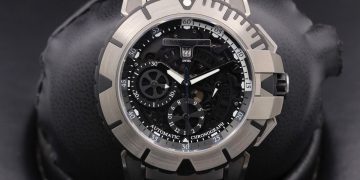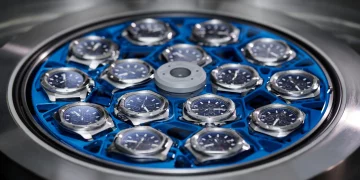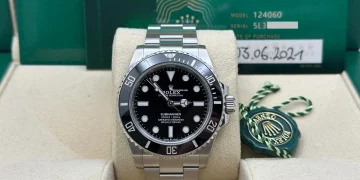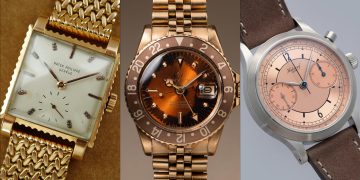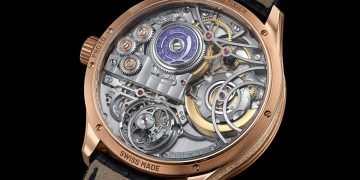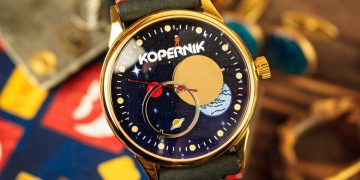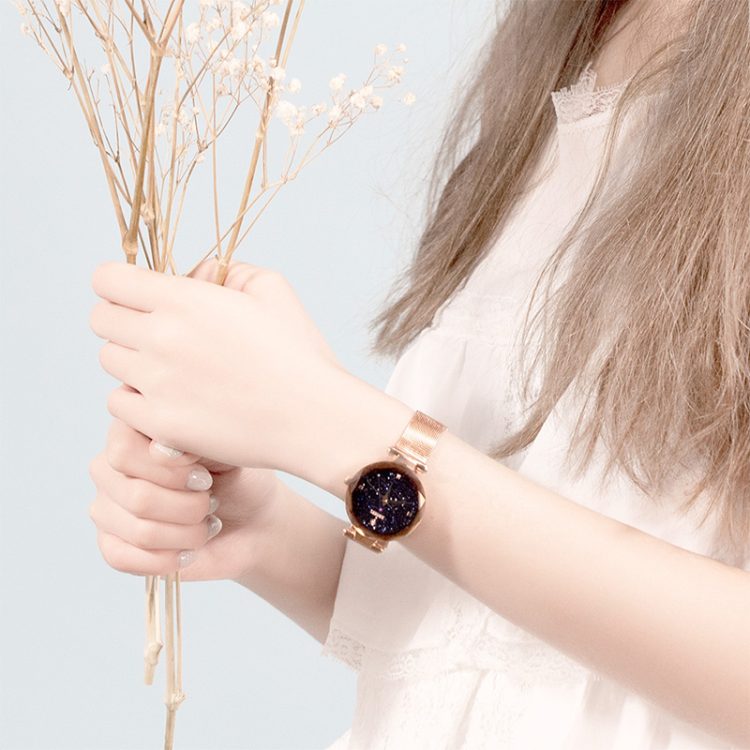Introduction:
In the luxury watch industry, brand history and cultural heritage are often as important as the watch itself. For many watchmakers, particularly the most renowned Swiss and European brands, their long histories and rich cultural influences have become integral to their identities. These factors not only influence the design, craftsmanship, and marketing strategies of the brands but also play a crucial role in fostering consumer loyalty. But does the history and cultural influence of a watch brand truly increase consumer loyalty? In a competitive market where product innovation and technology are key driving factors, it is worth exploring whether a brand’s heritage and cultural significance can create lasting connections with its customers.
In this article, we will explore the ways in which a watch brand’s history and cultural influence can impact brand loyalty. We will examine the importance of tradition, heritage, and cultural significance in shaping consumer perceptions and loyalty in the luxury watch market.
1. The Role of Brand History in Building Loyalty
1.1 The Value of Tradition in Luxury Watchmaking
A brand’s history plays a central role in defining its prestige, craftsmanship, and authenticity. For many luxury watchmakers, their legacy is an essential part of their appeal. Brands like Rolex, Patek Philippe, Audemars Piguet, and Vacheron Constantin have a rich history dating back over a century, often with roots in craftsmanship and innovation. These histories create a sense of continuity, reliability, and trustworthiness for customers, which are essential components of consumer loyalty.
The perception that a brand has a strong and long-standing history imbues its products with a sense of timeless value. For instance, Rolex, founded in 1905, is not only known for its excellent craftsmanship but also for its role in creating watches that have become cultural icons. Many buyers choose Rolex for more than its precision and quality; they buy it because of the legacy and symbolism attached to owning a Rolex.
This history creates a strong emotional connection between the brand and the consumer. The idea that a brand has stood the test of time and evolved over generations makes customers feel they are investing in something that is valuable, timeless, and tested by history. This emotional connection is a powerful factor in building customer loyalty.
1.2 The Role of Heritage in Craftsmanship
The connection between history and craftsmanship is another key aspect of consumer loyalty. Consumers often feel drawn to brands that emphasize the traditional techniques that have been passed down through generations. Brands that maintain a commitment to artisanal methods or use time-honored processes, such as hand-finishing, engraving, and guilloché dials, appeal to customers who value quality and authenticity.
For example, Patek Philippe, founded in 1839, is known not just for the precision of its timepieces but for the dedication to traditional Swiss watchmaking methods. This sense of heritage and craftsmanship not only increases the perceived value of the product but also fosters a deeper bond between the consumer and the brand. People who purchase such timepieces are not simply looking for a watch but are seeking to become part of a legacy that celebrates history and fine craftsmanship.
By emphasizing craftsmanship that spans generations, brands cultivate a sense of trust and reliability, which is essential in the luxury goods market. When a consumer purchases a luxury watch, they are often seeking more than just a product—they are buying into a brand story and the culture it represents.
2. Cultural Influence and Consumer Connection
2.1 The Role of Cultural Significance in Shaping Brand Loyalty
The cultural influence of a watch brand can play a significant role in creating an emotional bond with consumers. This bond is often forged when a brand’s cultural heritage aligns with the values and identity of the consumer. Cultural influence can include a variety of elements, such as artistic design, local traditions, social values, or even national pride. A watch brand’s ability to reflect cultural values in its designs can foster deep loyalty from consumers who see their identity reflected in the product.
For instance, Seiko, a Japanese watchmaker, has embraced its cultural roots by incorporating traditional Japanese craftsmanship and design sensibilities into its timepieces. The brand’s commitment to precision, innovation, and elegance resonates with Japanese customers who value these attributes as part of their cultural identity. Seiko’s Spring Drive movement, which fuses traditional mechanical movements with electronic control, reflects Japan’s cultural appreciation for both innovation and tradition.
Similarly, Swiss brands like Patek Philippe and Audemars Piguet continue to emphasize their Swiss heritage, linking their timepieces to the longstanding tradition of Swiss watchmaking. These brands are synonymous with Swiss precision, luxury, and artisanal excellence, reinforcing a deep connection with customers who not only appreciate the product but also see it as an embodiment of their own cultural values.
When a brand taps into the cultural values and aspirations of its consumers, it deepens the emotional connection between the brand and the buyer. Consumers who feel a cultural alignment with a brand are more likely to become loyal customers, returning time and again for the emotional satisfaction that the brand provides.
2.2 The Role of Symbolism in Brand Loyalty
Luxury watch brands have long used cultural symbols to create a sense of identity and exclusivity. For example, the Rolex crown, or the use of royal blue by Patek Philippe, are not just design elements—they are part of a larger symbolic narrative that communicates ideas of luxury, prestige, and status. Consumers are drawn to these symbols because they evoke a sense of belonging to something greater than themselves, which contributes to their long-term brand loyalty.
These cultural symbols, combined with the rich history of the brand, create a powerful emotional connection that enhances the consumer’s sense of pride in their purchase. When a brand’s cultural significance resonates with an individual’s personal values, it can lead to strong emotional attachment, which is a key driver of brand loyalty.

3. Does Heritage and Culture Influence Repeat Purchases?
3.1 The Role of Brand Legacy in Repeat Purchases
A brand’s history and cultural influence are critical in influencing not just initial purchases but also repeat purchases. Consumers who have a strong emotional connection to a brand are more likely to return to that brand for future purchases. This is particularly evident in the watch industry, where repeat buyers are often loyal to specific brands because of the personal significance and history attached to the brand.
For example, customers who buy a Rolex Submariner or a Patek Philippe Calatrava often do so because they respect and admire the legacy and heritage behind the brand. This loyalty is built over time, with consumers often returning to purchase additional timepieces from the same brand. The sense of belonging to a brand with a rich history and cultural heritage makes these customers more likely to stay loyal and recommend the brand to others.
3.2 Cultural Relevance and New Product Launches
Brands that successfully integrate cultural elements into their designs are also more likely to stay relevant in the long term. For instance, when brands launch limited-edition timepieces that reflect cultural themes or heritage, they can spark excitement and renewed interest among their customer base. Vacheron Constantin, for example, has released special edition watches that celebrate significant cultural events or historical anniversaries, appealing to consumers who feel connected to those milestones.
This approach not only celebrates a brand’s history but also deepens the emotional connection between the consumer and the brand. When customers feel that a brand understands their cultural preferences and values, they are more likely to remain loyal, not just to the individual watch but to the entire brand.
4. Conclusion: The Power of History and Culture in Building Loyalty
The history and cultural influence of a watch brand can significantly increase consumer loyalty. By leveraging heritage, tradition, and cultural relevance, watch brands can create strong emotional connections with their customers. These emotional bonds are essential in fostering brand loyalty, as customers are more likely to return to a brand that resonates with their values, aesthetics, and personal identity.
In the luxury watch industry, where craftsmanship, exclusivity, and prestige are paramount, brand history and cultural influence provide the foundation for a deeper connection between the brand and its customers. As consumers seek more than just a timepiece, but a symbol of their personal identity and cultural values, watchmakers who emphasize their legacy and cultural significance are more likely to cultivate long-term loyalty.



